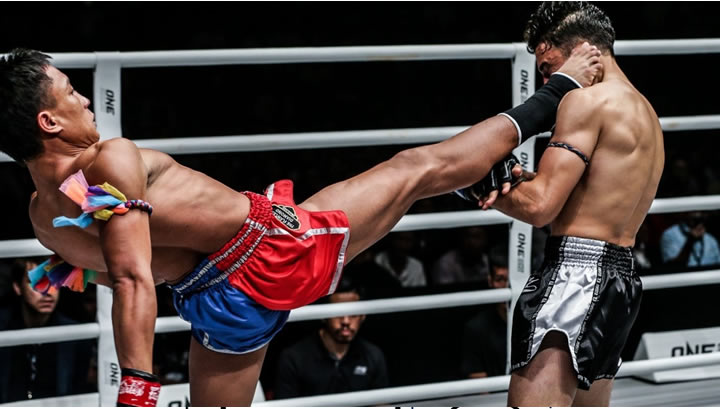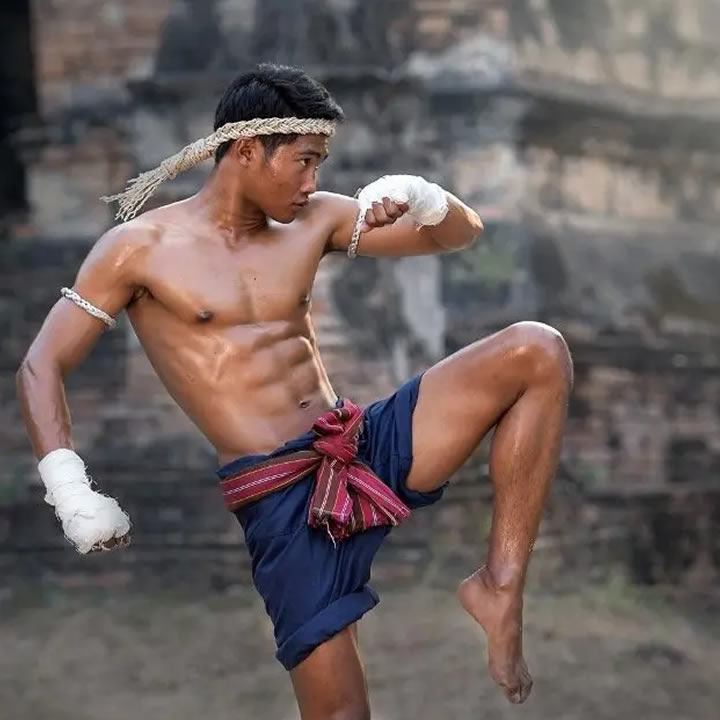Muay Thai, often referred to as the “Art of Eight Limbs”, is Thailand’s national sport and martial art.

Muay Thai is known for its powerful strikes using fists, elbows, knees, and shins.
Once a local tradition practiced primarily in Thailand, Muay Thai has experienced a meteoric rise on the global stage, becoming a cornerstone of the international martial arts community and a popular sport worldwide.
Historical Roots and Cultural Importance
Muay Thai traces its origins to ancient Thai military practices, where it was used for combat and self-defense. Over time, it evolved into a competitive sport, especially during the reign of King Rama V in the 19th century.
The sport is deeply intertwined with Thai culture and identity, symbolizing perseverance, respect, and discipline. Fighters perform traditional ceremonies called *wai kru* before fights, paying homage to their trainers and ancestors, adding a spiritual and cultural dimension to the practice.
The Globalization of Muay Thai
In recent decades, Muay Thai has transcended its national borders and gained international prominence.
Several factors have contributed to its global rise:
- International competitions and recognition
- Influence of mixed martial arts (MMA)
- Global gym networks and training camps
- Cultural appeal and fitness movement
International Competitions and Recognition
Muay Thai has gained significant recognition as a professional sport, with international competitions taking place in countries across Europe, North America, and Asia. World championships have brought the sport into the global spotlight.
In 2016, Muay Thai was provisionally recognized by the International Olympic Committee (IOC).
Influence of Mixed Martial Arts (MMA)
Muay Thai’s rapid expansion can be partially attributed to the rise of Mixed Martial Arts (MMA). The techniques of Muay Thai are highly valued in MMA due to the art’s powerful striking capabilities.
Prominent MMA fighters have incorporated Muay Thai into their fighting styles, bringing international attention to the sport. The sport’s emphasis on striking, clinching, and endurance has made it an essential part of the training regimen for many MMA practitioners.
Global Gym Networks and Training Camps
Thailand has become a hub for foreigners seeking authentic Muay Thai training. Hundreds of gyms, especially in regions like Bangkok, Phuket, and Chiang Mai, offer rigorous training camps for tourists, fighters, and martial arts enthusiasts.
These training camps cater to everyone, from beginners to professionals. Muay Thai gyms outside Thailand have also proliferated in countries like the United States, the United Kingdom, Australia, and Brazil, further boosting the sport’s global accessibility.
Cultural Appeal and Fitness Movement
Beyond the competitive aspect, Muay Thai has gained popularity for its fitness benefits.
With high-intensity cardio and strength training, many individuals have embraced Muay Thai as a full-body workout. Its appeal as a fitness activity has made it popular among those looking for weight loss, conditioning, and improved discipline.
Additionally, Muay Thai’s cultural appeal draws in people who are interested in martial arts beyond just physical fitness.
Muay Thai in Popular Culture
Muay Thai has also made its way into global popular culture.

Films such as Ong-Bak: The Thai Warrior, starring Tony Jaa, have been introduced.

Muay Thai’s dynamic techniques to international audiences.
This exposure has not only promoted the sport but has also sparked interest in Thai culture. Furthermore, documentaries and travel shows often feature Muay Thai training camps as part of the broader experience of visiting Thailand.
Challenges and Future Prospects
While Muay Thai has seen tremendous growth, challenges remain.
Thailand faces competition from countries with growing Muay Thai scenes, such as the Netherlands and Brazil. To maintain its cultural connection to the sport, Thailand has sought to promote Muay Thai as both a professional sport and a heritage tradition.
Muay Thai has grown in popularity among children. The sport’s inclusion in international sporting events like the Asian Games and potential future Olympic status also present new opportunities for growth and visibility.
Muay Thai organizations are working toward greater regulation and athlete safety. Efforts to improve medical standards, athlete insurance, and stricter rules on head strikes for youth fighters aim to protect the health and longevity of athletes.
Conclusion
Muay Thai’s rise on the global stage is a testament to its versatility, cultural richness, and the dedication of its practitioners. From local stadiums in Thailand to arenas around the world, the sport has captivated audiences with its fierce techniques and deep cultural roots.
As it continues to evolve and gain international recognition, Muay Thai remains a symbol of Thailand’s enduring cultural heritage while standing as a dominant force in the global martial arts community.
Source: Sportchai is one of Thailand’s most trusted sources for casino strategy reviews and strategies. Sportchai provides relevant and up-to-date information on all of Thailand’s leading online and offline betting sites and casinos.

